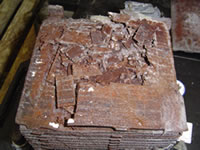Technical info - Accu levert geen startstroom
The end of a starter battery’s service life is usually announced by poor cranking, especially at low temperatures. That, of course, could very well be caused by normal wear. A battery is subject to two processes of natural wear: corrosion of the (positive) grid and loss of active mass. These processes are taking place gradually, never suddenly. Unfortunately that is not to say that the symptoms are not from one day to the next: a good night-frost can make painfully clear what at higher temperatures remained unnoticed!
If the problem does occur prematurely is has most likely been caused by overcharging and/or excessive temperature in which case it is important to check the alternator to stop it from happening again!
A second cause can be found in loss of active mass by deep discharge.No surprise, if the battery has insufficient capacity to meet the energy requirements of the vehicle. The same applies, of course, for starter batteries that do not receive sufficient charge. Short trips during which the dynamo cannot fully charge the battery will, eventually bring the battery in a permanent state of deep discharge which severely cuts battery life.
Another cause of battery failure is often overlooked: acid stratification. The electrolyte on a stratified battery concentrates on the bottom, causing the upper half of the cell to be deprived of it. The upper half of the cell is deprived of acid, which will limit plate activity, promote corrosion and reduce performance. Whilst the acid concentration is light on top, it is heavy at the bottom. Such a high acid concentration artificially raises the open circuit voltage. The battery appears fully charged but has a low CCA.

Driving habits rather than battery defect are often the cause of battery failure.
A manufacturer of luxury cars reveals that of 400 car batteries returned under warranty, 200 are working well and have no problem. Low charge and acid stratification are the most common causes of the apparent failure. The car manufacturer says that the problem is more common on large luxury cars offering power-hungry auxiliary options than on the more basic models.